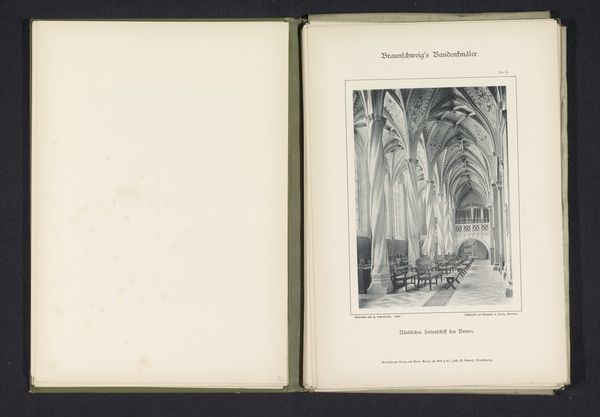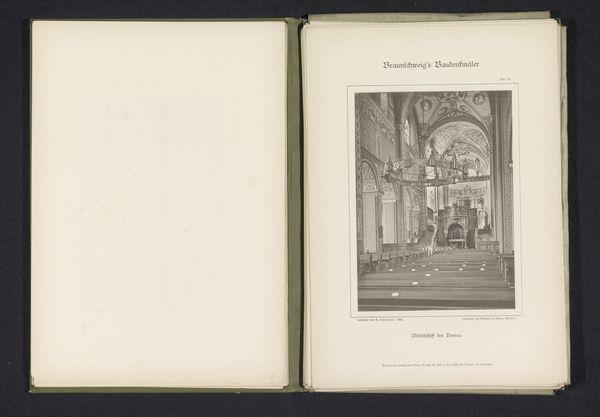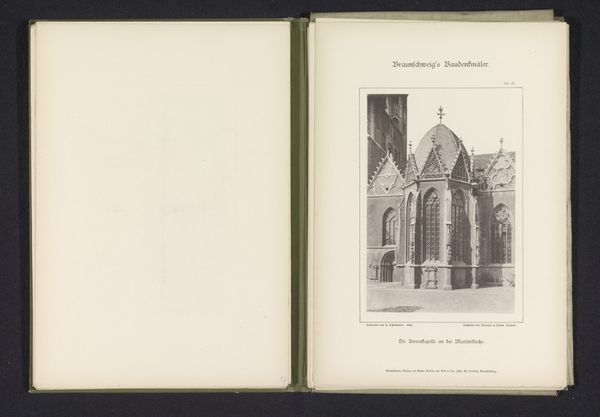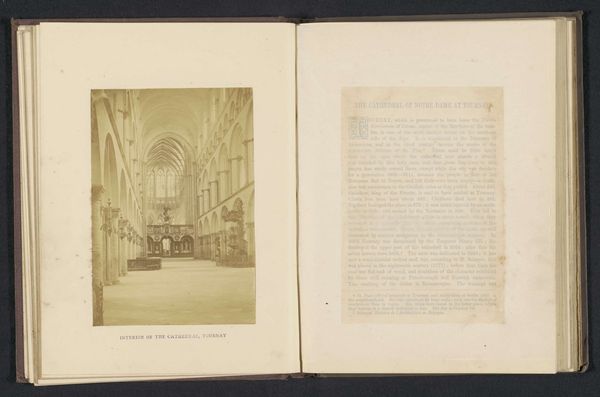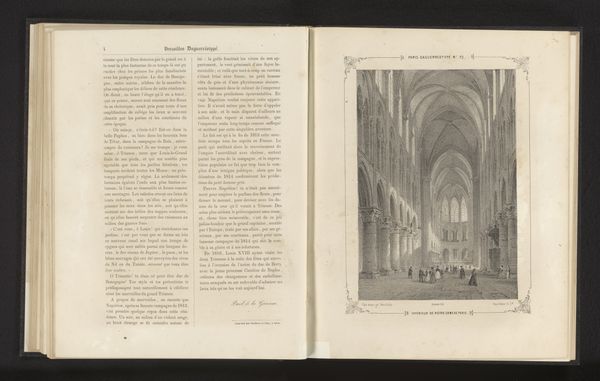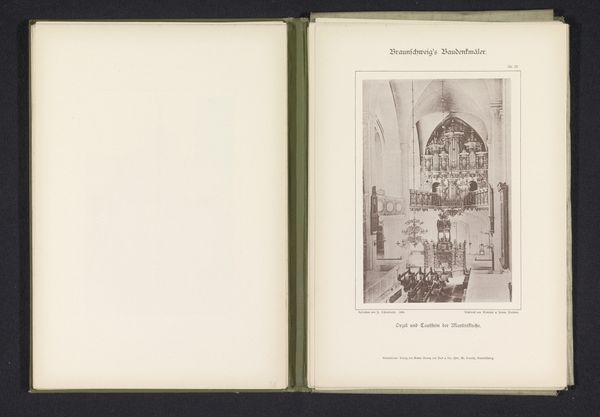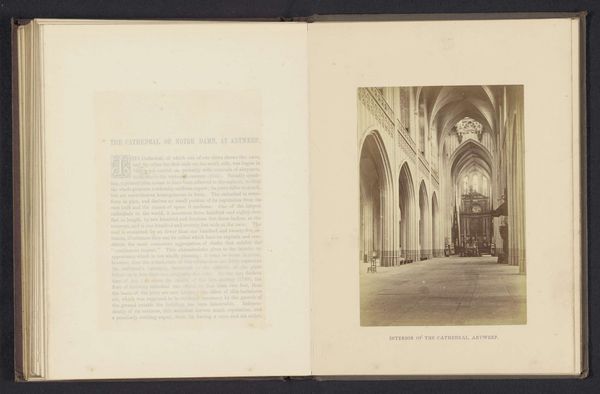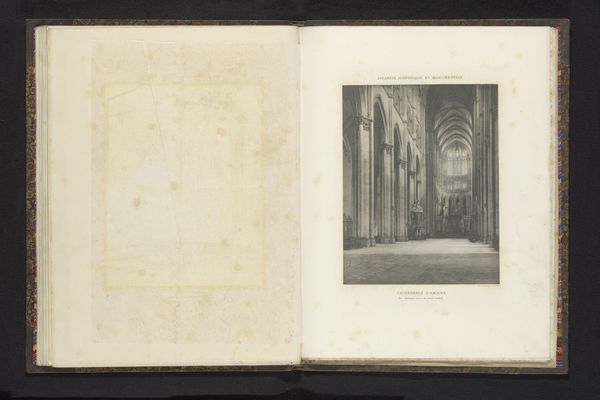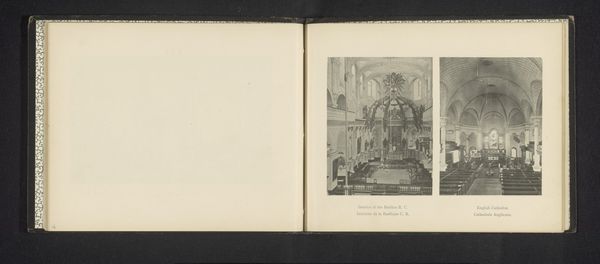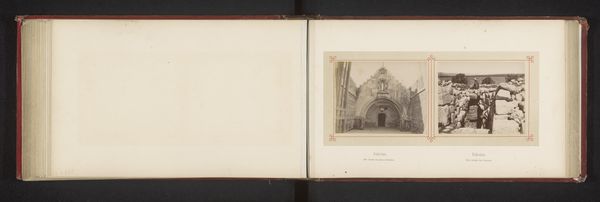
Dimensions: height 157 mm, width 110 mm
Copyright: Rijks Museum: Open Domain
Editor: Here we have J. Schombardt's "Interior of the Nave of the St. Catherine's Church in Braunschweig," created in 1892. It appears to be a print, maybe even a photograph, capturing the architecture of this Gothic church. It has a really somber and serene feeling to it, almost austere. What symbolic language jumps out to you when you look at it? Curator: The most prominent symbolic aspect here is verticality, wouldn't you agree? Look how the lines draw the eye upwards. It speaks of aspiration, transcendence, the human desire to reach for something beyond the earthly realm. That upward gaze has persisted throughout different belief systems across the ages. Editor: Definitely, the height is exaggerated! And what about the light? The windows seem important. Curator: Ah, the light! This isn't just illumination; it’s a symbol of divine presence, enlightenment, and spiritual purity. Sunlight, often interpreted as divine radiance, pours in, transforming the physical space into a sacred one. Consider how stained glass, had it been captured clearly here, functions as visual parables, narratives in light and color to guide the faithful. Does that shift your reading of the image at all? Editor: Yes, it makes me think about how architecture itself can be a kind of symbolic language, directing our thoughts and emotions. But how much of that language is intentional, and how much is just our interpretation over time? Curator: That's the crux of it, isn't it? Intent is only part of the equation. These symbols resonate across centuries precisely because they tap into something primal, something deeply embedded in the human psyche. We continually reinvest them with meaning. Editor: I never thought about churches as being these active sites of continued meaning-making! That’s insightful. Thanks.
Comments
No comments
Be the first to comment and join the conversation on the ultimate creative platform.
